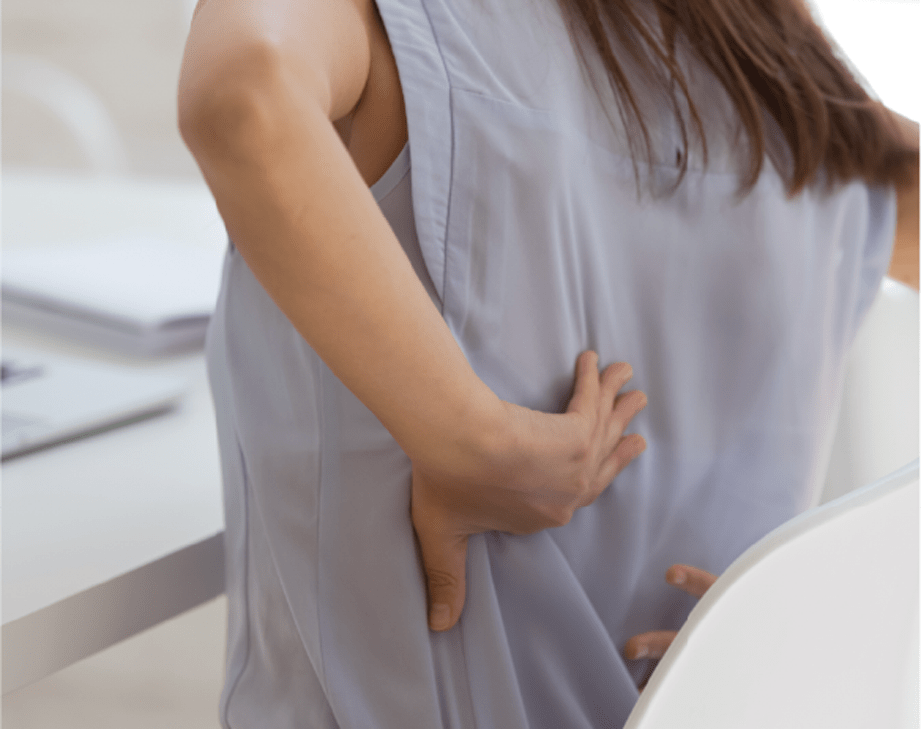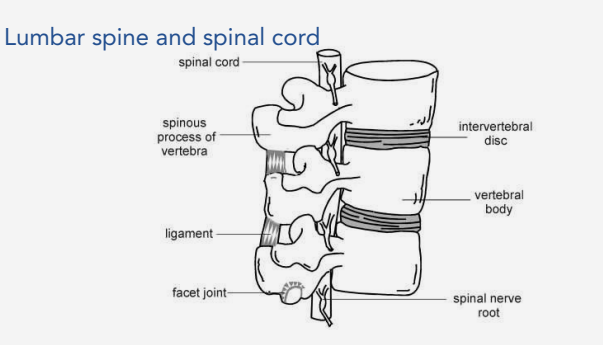

Spinal disc problems | Fact Sheet
Introduction
We all have spinal discs between each of the bones (vertebrae) in our spines. Not only do they keep the vertebrae separated, they also act as shock absorbers.
As we get older, our spinal discs (also called intervertebral discs) gradually become damaged, which can cause problems such as back pain, slipped discs or - much more rarely - infection (discitis).

Causes
Slipped disc (prolapsed disc) - A ‘slipped’ or prolapsed disc often causes severe lower back pain. The disc may press on a nerve root, which can also cause pain and other symptoms in sufferers’ legs.
Degenerative disc disease - As we get older, the spinal discs begin to shrink, become damaged and weaker. They dry out and absorb shocks less effectively.
This degeneration can be aggravated over time by sports or daily activities, and back injuries can cause discs to deteriorate more quickly. There is very little blood supply to the discs. So, once a disc is damaged it cannot repair itself - and the disc can start to deteriorate.
Infection of the spinal disc (discitis) - The infection is usually caused by a germ (bacterium) - but is sometimes caused by a viral infection.
Symptoms
Unsurprisingly, back pain is the main symptom, and it is very common - most-often manifesting in the lower back. Pain may also go into one or both legs, when it is known as sciatica.
Nerve pain occurs if the affected disc is pressing on a nerve. The most-common nerve affected is the sciatic nerve, causing pain radiating to the leg.
The pain can be sudden and sharp, sometimes radiating to the foot. It may also cause numbness and tingling, due to pressure on the nerve.
Sciatica is caused by a problem with a disc in the lower back (lumber spine). A similar problem with a disc in the neck (cervical spine) may cause pain, numbness and tingling in the arm
The accompanying symptoms listed below require urgent follow-up, as they may indicate a serious, underlying condition
- Weakness of legs
- Being unable to empty your bladder
- Losing control of your bladder or bowel
- Sudden and severe pain, which is relieved by lying down
- Localised tenderness over one of the vertebrae
- Fever
- Unexplained weight loss
- Pain during the night, or early-morning stiffness lasting more than 45 minutes
- Pain improving with movement and worse at rest
- Muscle weakness or wasting of muscles
Tests, treatment and prognosis
The tests offered will depend on symptoms, but may include a blood test and MRI (magnetic resonance imaging) scan.
Initial treatment usually involves painkillers, anti-inflammatory medication, simple exercise, and advice to keep as normally active and mobile as possible.
If the pain or any restriction caused by the problem lasts for one-to-two weeks, treatment options include:
- Physiotherapy
- Referral to a specialist for epidural corticosteroid injection
- Further treatment from an orthopaedic or pain specialist
Prevention
Lifestyle adjustments can be very effective in preventing spinal disc problems, with the following key points recommended:
- Regular exercise
- Weight loss for overweight people
- Correct sitting position and posture
- Correct and safe lifting technique (bending the knees when lifting objects)



